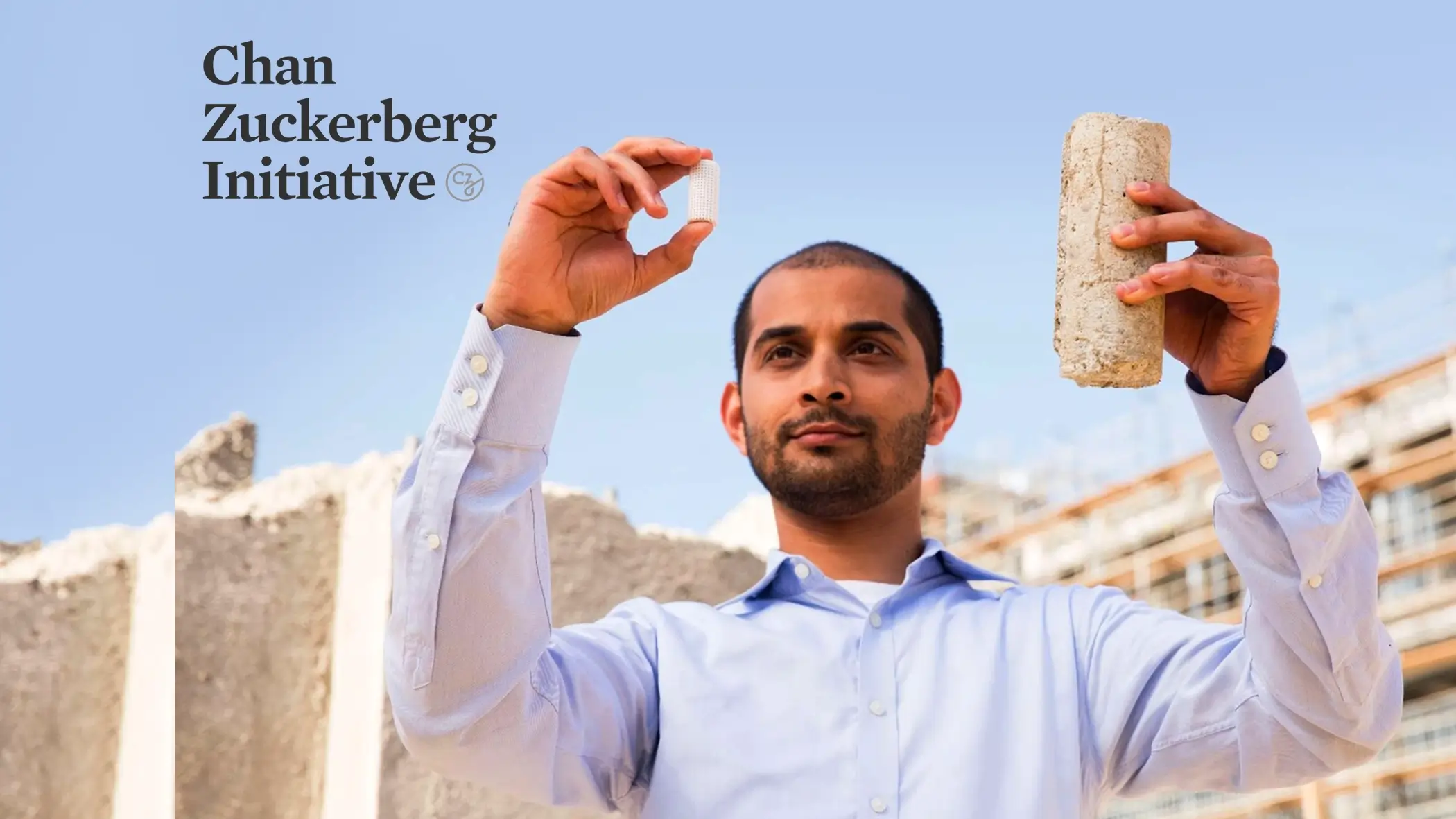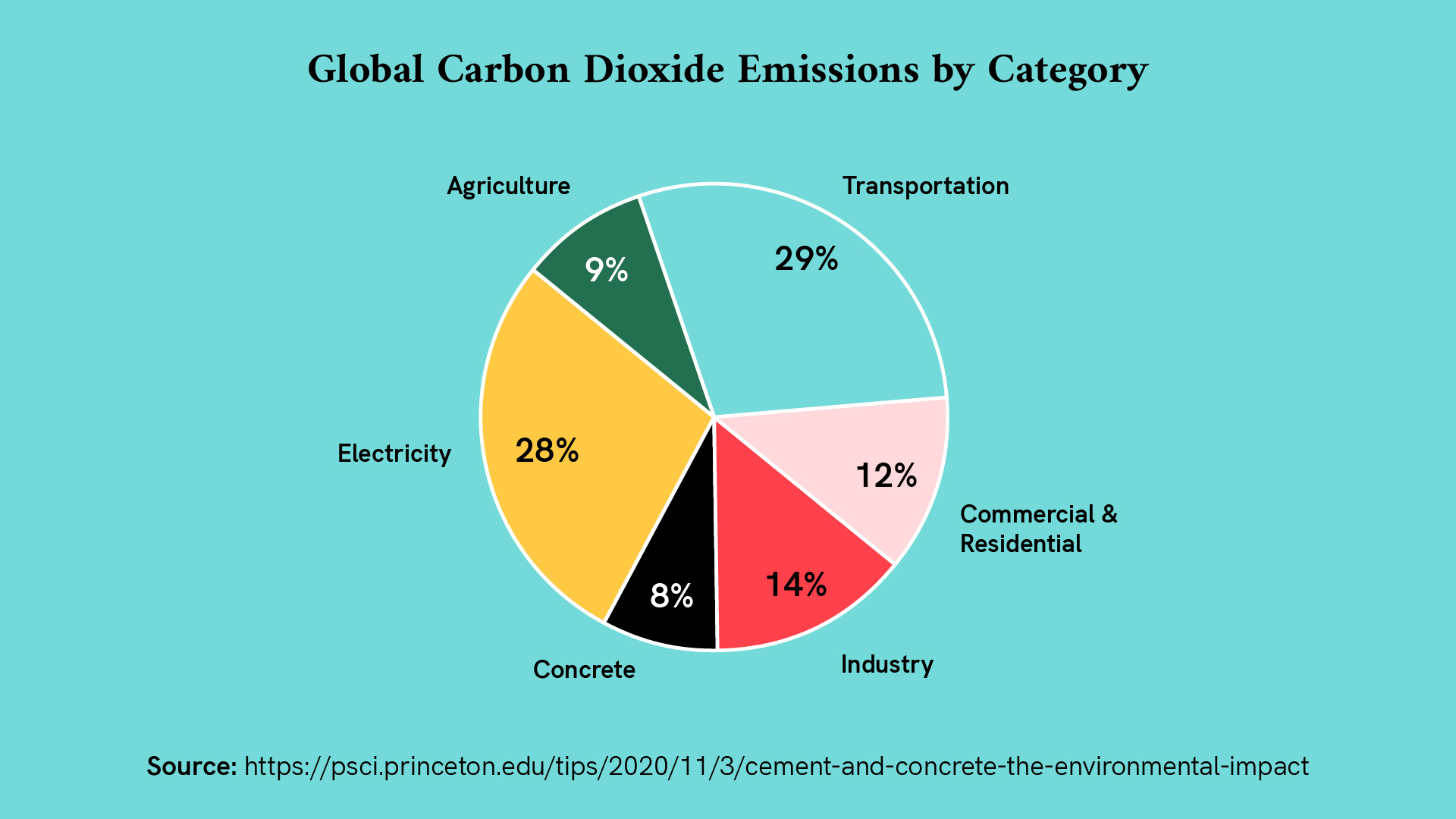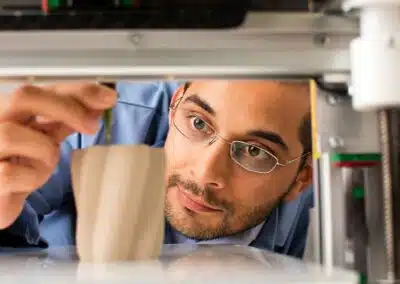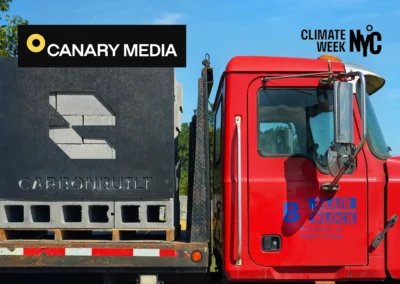Take a close look at a concrete block made with CarbonBuilt’s low-carbon concrete technology, and you won’t notice anything special. It’s as strong and as dense as any other concrete block.
Apr 22, 2022 | Original Article: Chan Zuckerberg Initiative
For Dr. Gaurav N. Sant, founder of CarbonBuilt, that’s precisely the point. What sets the concrete apart is not how it performs or how it looks — but how it’s made. The recipe calls for an unusual ingredient: carbon dioxide, a greenhouse gas and a significant driver of climate change.
“We can create concrete that is made using carbon dioxide (CO2) and performs as well as existing materials, all without a cost increase,” says Gaurav, a professor of civil and environmental engineering at the UCLA Samueli School of Engineering, and holder of the Pritzker Chair in Sustainability.
“This is not only a major innovation in the development of concrete as a material, but it’s also an important part of addressing climate change using a material that we cannot do without.”
— DR. GAURAV N. SANT, FOUNDER OF CARBONBUILT
The Environmental Impact of Cement and Concrete on Greenhouse Gas Emissions
The cement and concrete industry is responsible for an estimated 8% of global greenhouse gas emissions, accounting for more than 1.5 billion tons of carbon dioxide released into the atmosphere in 2018. From the quarrying of materials to the energy-hungry kilns and chemical processes involved, it’s among the most challenging sectors to decarbonize.
CarbonBuilt hopes to change that. Fueled partly by a strategic program investment from the Chan Zuckerberg Initiative and contracts for carbon removal with Stripe and Shopify, the company anticipates completing the first retrofit of a commercial concrete block plant later this year.
The Path To Reducing Concrete’s Carbon Footprint
The company’s origins lie in Gaurav’s lab at UCLA. Eight years ago, with a team of researchers, he began testing new formulas for cementation materials. Along with sand, stone and water, cement is the primary ingredient used to make the concrete found in everything from walls and foundations to roads and bridges. Cement is the glue that holds concrete together.
To create a new kind of cement, the scientists reacted carbon dioxide with calcium hydroxide, commonly known as hydrated lime. They were not the first to work with this combination. But they identified ways to make the reaction proceed quickly enough to be useful.
“We were told it would never work,” Gaurav says. “Through curiosity, a desire to succeed, and beginner’s luck, we identified the right combination of temperature, humidity and carbon dioxide concentration.”
The team built a device housed in a university building’s basement, fed by a blend of gases, including carbon dioxide, meant to simulate the flue gas coming from a fossil-fuel plant’s smokestacks. The reaction worked despite the low levels of CO2 in this mixture. This end product was a long way from the billions of tons of cement and concrete produced worldwide each year, but it was a promising start.
This is not only a major innovation in the development of concrete as a material, but it’s also an important part of addressing climate change using a material that we cannot do without.
CARBONBUILT FOUNDER DR. GAURAV N. SANT
With support from the Department of Energy, the Anthony and Jeanne Pritzker Family Foundation, and others, Gaurav’s team partnered with the Wyoming Integrated Test Center to demonstrate the technology at a coal-fired power plant. They went on to demonstrate the technology at a coal and natural gas-fired power plant at the National Carbon Capture Center in Wilsonville, Alabama. The technology utilized more than 75% of the carbon dioxide in flue gas. Winning the NRG COSIA Carbon XPRIZE landed the team a $7.5 million purse.
What’s Next for CarbonBuilt’s Low Carbon Concrete?
The company is initiating commercialization by co-investing with concrete producers to deploy its technology in existing masonry plants. The new approach reduces the costs for concrete producers, resulting in concrete that’s cost-competitive with existing sources and cheaper under some conditions of energy prices and input material costs. Today, CarbonBuilt uses carbon dioxide from on-site boilers fueled by forestry residues to cure and strengthen the concrete.
“In the future, we will use carbon dioxide captured directly from the air, but this requires the costs of direct air capture technology to come down,” says Rahul Shendure, CEO and director of CarbonBuilt and a long-time entrepreneur in the clean-tech sector. Rahul is now spearheading the effort to commercialize and scale CarbonBuilt.
“Concrete and cement are only one piece of the larger climate problem,” Rahul says. “But if we take out at least a billion tons of carbon dioxide a year, we’ll feel like we’ve done our part.”
— RAHUL SHENDURE, CARBONBUILT CEO, DIRECTOR
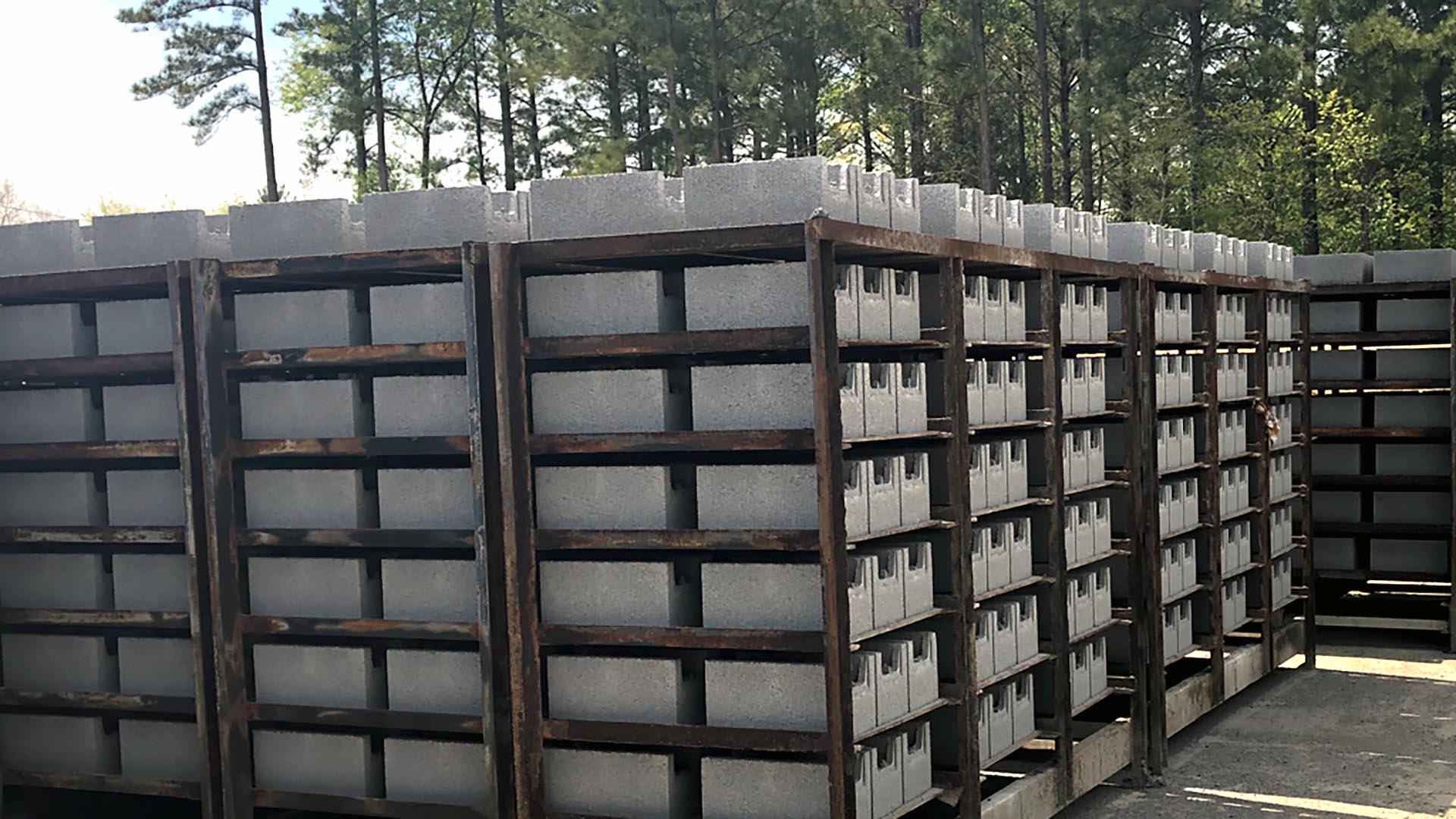
For Gaurav, this journey is the next chapter in a long family history. Seeing CarbonBuilt’s concrete blocks used in homes for a recent Habitat for Humanity project takes him back to his childhood. When his family visited Pune — a city in India with a population of more than 7 million — people recognized his last name. That’s because his engineer grandfather built many of the structures in this sprawling metropolis, including the city hall.
“My father, who is also a civil engineer, used to drive us around and point out my grandfather’s buildings,” Gaurav says. “I’ve been around the construction industry all my life, so it’s exciting to create carbon-sequestering building materials that the industry will actually use.”
Gaurav has also been a force in expanding UCLA’s commitment to translating laboratory research into the world. In 2018, he founded the university’s Institute for Carbon Management (ICM). Supported by CZI and many others, the institute brings together faculty from across the university — including engineering, business, the physical sciences, and public affairs — to derisk, demonstrate and translate technologies for carbon removal that can be ready for commercialization in the next five to 10 years.
These projects, carried further by spinoff companies, include electrochemical methods for taking carbon dioxide out of the air and extracting the gas from seawater. ICM is also creating ways to strengthen supply chains for materials critical to green tech, such as the lithium and nickel used in batteries.
“We learned a lot from creating CarbonBuilt,” Gaurav says. “Now we want to take other discoveries from the bench to prototype to deliver a big impact in a meaningfully short period of time.”
